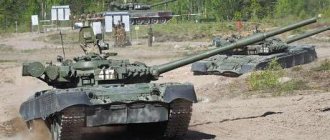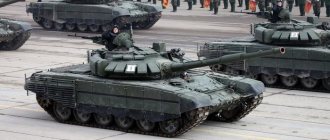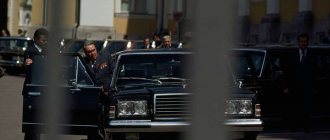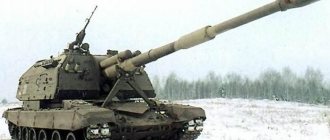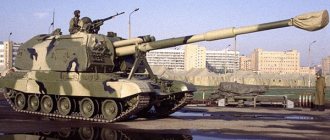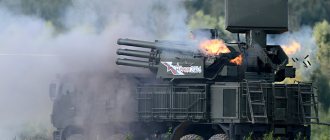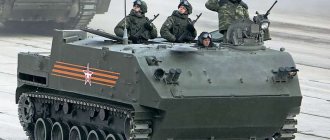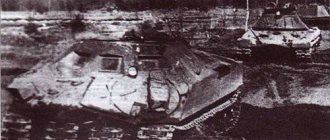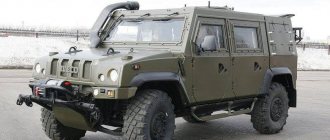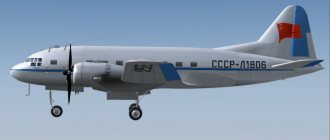The original purpose of armored personnel carriers on the battlefield was the mobile delivery of people to specified positions. This made it possible to support tank offensives and quickly reorient troops in response to the changing front-line situation. In addition to this, armored personnel carriers delivered cargo and transported the wounded.
In modern conditions, armored personnel carriers are increasingly designed according to the type of infantry and airborne combat vehicles (BMP and BMD). This makes the armored personnel carrier a full-fledged support and cover combat unit, which is especially important during operations in the rear.
The Rakushka armored personnel carrier is a Russian multifunctional landing vehicle, created to support airborne units. The emphasis is not only on the rapid delivery of fighters and supplies, but also on air landings. The autonomy of ongoing operations is also taken into account, in which the vehicle becomes the main infantry cover.
History of the model
BTR-MDM "Rakushka"
The task of developing a new multi-purpose landing vehicle was set before the designers back in 1992. The difficult economic situation of the country and lack of funding for the army led to the freezing of the project. As a result, active work on it began only in 2008.
The key task of the new armored personnel carrier was to replace the outdated Soviet amphibious armored personnel carrier, produced back in 1974. The new vehicle had to meet the requirements of modern equipment and weapons, and also take into account the specifics of landing operations.
The BTR-MD was created at the Volgograd Tractor Plant. Later, serial production was transferred to the Kurgan Machine-Building Plant, where a modernized version of the BTR-MDM is being assembled. In 2013, the first vehicles were sent for testing.
In 2015, armored personnel carriers began to enter service with the army, and from that moment on, their photos began to appear on the Internet. As of 2022, there were already 30 such machines. It is expected that by 2025, about 200 armored personnel carriers of this line in various modifications will enter service with the landing forces. As a result, the BMD-4M and Rakushka armored personnel carriers will become the basic landing equipment.
Historical facts
The first combat-ready armored vehicle was the “military motor car.” It was demonstrated in London in 1902, on April 4th, by an engineer from England, Simms. This project was developed by the summer of 1898. The car was protected by a six-millimeter open-type armored hull, and three machine guns were covered with shields. The power of the four-cylinder engine, running on heavy fuel, reached 16 hp. With. However, the British War Ministry was as short-sighted as the Russian one in rejecting Simms' idea. But in the same year, 1989, a French company built a batch of semi-armored armed trucks.
Goals and objectives for application
Rakushka armored personnel carriers are designed as a landing vehicle, the main purpose of which is to support units in any combat conditions.
The tasks of an armored personnel carrier include:
- support for infantry formations, cover;
- transportation of goods, supply of units;
- removal of the wounded, conversion into an ambulance;
- organization of a command center or radio communication center.
The key tasks of the armored personnel carrier remain the delivery of troops to specified positions. The new vehicle allows you to transport soldiers under your own power, to land from the air, as well as to force water obstacles and land from the sea overcoming the surf line. The last factor makes it a full-fledged amphibian.
06-Rakushka_zr-09_15
The troop compartment can accommodate 13 soldiers or 2 tons of cargo.
For a Spartan armored vehicle interior, it is quite spacious. The troop compartment can accommodate 13 soldiers or 2 tons of cargo. For a Spartan armored vehicle interior, it is quite spacious.
The troop compartment can accommodate 13 soldiers or 2 tons of cargo. For a Spartan armored vehicle interior, it is quite spacious.
Design and structure of the amphibian
Key differences between the basic and modified versions
The body of the Rakushka armored personnel carrier is made of welded armor plates. The machine is divided into three compartments. In the front is the control room, where the driver, commander and one of the paratroopers are located. The armored personnel carrier is made according to the design of a tank, so the engine is located in the rear.
The middle part is intended for transporting troops. Paired seats are located facing the direction of travel, three pairs on each side. There is space for cargo in the niches above the tracks. Also in the body there are loopholes for firing from the vehicle.
Surveillance and communications equipment
Surveillance of the surroundings is carried out from the driver's seat through three periscope devices. If necessary, the central one is replaced with a night vision device. Additional tracking is carried out from the airborne unit through loopholes. Internal communication and switching are provided by the R-174 system.
Taking into account the weapons, aiming is ensured from the shooter's position. The turret installation is also equipped with a TNP3VE01-01 sighting system for guidance and automatic firing from the commander’s position. Through this device he can also monitor the area.
Main weapons
The armament of the Rakushka armored personnel carrier is represented by a 7.62 mm Kalashnikov machine gun. Power is provided by two boxes of 1000 rounds of ammunition, united by a single path. The modified version has an additional machine gun on the right front side.
Armored personnel carrier armor protects soldiers from bullets and shrapnel. The undercarriage is protected to overcome mines.
Means of camouflage
Most of the equipment elements of the Rakushka armored personnel carrier are borrowed from the BMP-3. These also include means of camouflage. In addition to the camouflage color, the armored personnel carrier is equipped with “Tucha” smoke grenades.
The first armored personnel carriers of Russia
The construction of these machines from the First World War was led by Dobzhansky. They were designed at the Russian-Baltic Plant. The carrying capacity of the vehicles reached two tons. The Colonel was familiar with the French armored truck manufacturing process. Moreover, Dobzhansky even participated in their design. In Russia, armament and armoring of vehicles was carried out at that time near St. Petersburg, in Kolpino, at the Izhora plant. Due to the fact that the front needed protected vehicles, the chassis of serial trucks was simply sheathed with chromium-nickel rolled sheet steel, which could not be penetrated by a pointed bullet from two hundred steps. The protection was attached to the body with rivets. During construction, the rotating tower had to be abandoned. Three Maxim machine guns were used as weapons. They were installed in the embrasures of the frontal sheet and sides.
Specifications
Armored personnel carrier on water
The technical characteristics of the Rakushka armored personnel carrier meet the requirements of a modern combat vehicle. There are certain differences between different modifications aimed at highly specialized tasks. The main model, due to its indicators, also maintains a wide range of application possibilities.
Engine and transmission
The armored personnel carrier is powered by a UTD-29 turbocharged boxer engine, also borrowed from the BMP-3. Engine power - 450 hp. With. The cooling system is injection-fan. The transmission and rotation mechanism is located in the same block with the engine and consists of a two-shaft reversible gearbox. There is also a drive for a water-jet propulsion unit, which provides controlled buoyancy of the machine.
Electrical equipment
Taking into account the borrowing of elements from the BMP-3, the electrical equipment of the Rakushka armored personnel carrier is represented by 6ETs088 equipment. There is no exact information about the modified version of the machine.
Chassis
For better maneuverability, the BTR-MD moves on caterpillar tracks. The chassis consists of five support and four support rollers on each side. The tracks have fine-linked rubber-metal hinges. The track rollers are secured with air springs.
One of the key features of the BTR-MD chassis is adjustable ground clearance. There are three positions - minimum 70-100 mm, working 420 mm and maximum 500-510 mm.
Landing
The Rakushka armored personnel carrier is capable of transporting up to 15 people, including the driver and commander. For landing there is a hatch in the stern. There are also two round hatches in the roof of the control room and two rectangular ones in the middle landing part of the armored personnel carrier.
Maximum speed on water and land
The speed characteristics of the BTR-MD are presented by the following indicators:
- maximum speed on the highway - up to 71 km/h;
- speed on a dry dirt road - 45-50 km/h;
- speed afloat - 10 km/h.
The range on the highway is 500 km, on rough terrain - 350 km. The tracked undercarriage allows the armored personnel carrier to overcome climbs of 35 degrees, objects and walls 0.8 m high and ditches 1.5 m high.
Dimensions and weight
In terms of dimensions, the technical characteristics of the BTR-MD have the following values:
- hull length - 6.085 m;
- width - 3.15 m;
- height - 2.7 m;
- weight - 13.2 tons.
The dimensions of the vehicle allow it to be dropped from the air from IL-76 (M, MD), AN-124 aircraft, as well as from the external sling of Mi-26 helicopters. This makes the armored personnel carrier the optimal choice for landing operations.
BTR-MDM
The BTR-MDM is adapted for operation in all conditions of combat use, in a wide variety of climatic conditions. The vehicle is intended for transportation in airborne units and air assault formations of the naval marines:
- personnel (landing force),
- ammunition,
- spare parts.
In 2008, in accordance with the tactical and technical specifications approved by the head of the GABTU of the Russian Defense Ministry and the commander of the Airborne Forces, the development of the BTR-MDM began as part of the Rakushka-M program. In a short time, design documentation was developed, and a prototype armored personnel carrier was manufactured for preliminary tests. All work was carried out at the own expense of the machine-building and industrial group “Tractor Plants”.
The basic product in the development of the BTR-MDM was the BTR-MD armored personnel carrier produced by the Volgograd Machine-Building Company.
Spoiler: About the BTR-MD Shell
BTR-MD "Shell"
Sometimes unofficially called BTR-D-3, BTRD-3.
BTR-MD "Rakushka" (GBTU Index - Object 955) is a Russian airborne armored personnel carrier.
Created in the design bureau of the Volgograd Tractor Plant. The armored personnel carrier is based on the BMD-3 airborne combat vehicle. The main purpose of the vehicle is to replace the BTR-D in the troops. The dimensions and weight of the vehicle ensure air transportability and rapid overcoming of water obstacles. Main tactical and technical characteristics of the BTR-MD “Rakushka”
| Weight, no more, t | 13,2 |
| Crew, people | 2 (commander and driver) |
| Load capacity, t | 2 |
| Number of seats, pcs. | 13 |
| Specific power, kW/t (hp/t) | 22,3 (30,3) |
| Maximum engine power, kW (hp) | 331 (450) |
| Average speed on dry dirt road, km/h | 45-50 |
| Maximum speed, km/h | |
| on the highway, no less | 71 |
| afloat, no less | 10 |
| Airborne landing: | |
| airplanes, type | IL-76(M, MD), AN-124 |
| helicopter, type | MI-26 (on external sling) |
The armored personnel carrier is the basis for numerous upgrades both now and in the future.
Spoiler: About the BTR-MD Shell
Options for loading the usable area of the BTR-MD
| Landing | Wounded |
| Ammunition, property | Fuels and lubricants |
| Volgograd Machine-Building LLC. |
The modernization, which included unification of the chassis components with the BMP-3M and BMD-4M, was carried out in order to improve the main tactical and technical characteristics and reliability. The following borrowed from the BMP-3M are installed on the vehicle:
|
|
“The design of the BTR-MDM makes it possible to equip it with various interchangeable equipment, which is why it is intended to become the basic vehicle on the basis of which in the near future a whole family of military equipment for the Airborne Forces will be developed - command and staff vehicles, communications and control vehicles, medical, logistics support and others,” reports TASS, citing its source.
Video: Military tests of BMD-4M in low temperatures
https://youtube.com/watch?v=ClH64fR-aGQ
In the Ryazan region, airborne troops mastered a new combat vehicle
Video: Military operational tests of the modernized Rakushka armored personnel carrier
https://youtube.com/watch?v=4s4iOkqY4eA
The modernized Rakushka armored personnel carrier is undergoing military operational tests. Tula paratroopers are mastering the latest armored personnel carrier. Conditions are as close as possible to combat conditions. The machine is tested for strength to identify all possible defects.
- — In 2015, paratroopers will receive two battalion sets of BMD-4M and the Rakushka armored personnel carrier;
- — Adjustment of technical requirements for the production of BMD-4M;
- — Vladimir Shamanov personally took the helm of the BMD-4M;
- — Planned re-equipment with the BMD-4M will begin in 2015.
| Next > |
Advantages and disadvantages
BTR "Rakushka" during exercises
The key advantage of the BTR-MD is its versatility. The vehicle is designed for almost any operating conditions, which in many ways brings it closer to an infantry fighting vehicle. At the same time, the design of the armored personnel carrier allows it to be quickly converted into any center - from an ambulance to a command headquarters.
The Rakushka BTRD takes into account the autonomy of operations when landing to the rear. Electrical equipment, navigation and guidance systems allow even beginners who have completed basic training to effectively perform combat missions.
The vehicle borrowed the most successful design solutions of previous generations of armored personnel carriers and infantry fighting vehicles. Regarding the shortcomings, no significant aspects have yet been highlighted. This is due to the short service life, which does not allow an objective assessment of the project in the long term.
01-Rakushka_zr-09_15
Shells debut at the Victory Parade.
The rubber inserts in the track tracks for driving on asphalt and paving stones are clearly visible. Shells debut at the Victory Parade. The rubber inserts in the track tracks for driving on asphalt and paving stones are clearly visible.
Shells debut at the Victory Parade. The rubber inserts in the track tracks for driving on asphalt and paving stones are clearly visible.
Alternative solutions
Structures made from metal profiles have a lot of advantages, but some are not satisfied with their weight, problems with transportation when they need to move often, and some other nuances, so alternative solutions are selected. If you have to move often or go on vacation, then you can use a shell awning.
Shell awning Source bhutanmusktravels.com
Essentially, this is the same garage, but instead of sheets of metal, it uses high-strength fabric. It does not allow precipitation, wind or sunlight to pass through. In some cases, a tarpaulin is used for this, but it is better to use polyester fabric, which must be impregnated with special compounds. In addition, such an awning can be a good option for temporary housing on vacation, at the cottage, and so on.
Garage options
Several modifications of this design are offered on the modern market. The most popular is a collapsible garage, which can be mounted as an independent building to shelter a car. Such a structure is not considered a full-fledged building; it does not require a foundation, registration of documents and payment of taxes. This is a car awning that can be installed in the courtyard of multi-story buildings. However, to avoid problems in the future, it is better to resolve this issue with the municipality in advance.
Registration of documents and payment of taxes are not required for a shell garage Source con.varykel.ru.net
On the territory of your personal plot you can install a built-in garage model. This design can be mounted to the side wall of the house and looks like a hemisphere. This further saves space on the site and reduces the cost of the structure. But in this case, everything needs to be thought out at the stage of arranging the foundation of the house and the building must be erected with the appropriate fastenings.
If you decide to install such a garage after building a house, then you need to purchase an attached version. It does not need to be mounted to the wall, but can be installed in any convenient place from a permanent building. You can connect the structure and the house with a canopy or a corridor.
See also: The most popular garage projects.
Post-war technology
The experience of the 1944-1945 offensives showed that support for armored units was needed in the form of additional motorized infantry units. The best solution was the use of all-terrain vehicles, which had light armor that protected soldiers from shrapnel and small arms bullets. The development of the first such car was carried out under the leadership of Rubtsov, the leading designer at that time. The development of the first domestic armored vehicle, the index of which was “object 141,” was carried out in the design bureau of the Gorky Automobile Plant on the basis of the GAZ-63. The two-axle model with all wheelbases was designed to transport eight infantrymen. The machine had an open body on top, which was welded from sheets of 6-8 millimeters. The rear wall was equipped with a door for the landing; for the crew, entrances were equipped on the sides of the vehicle.
Video description
In the video you can see a prefabricated garage, which is easy to transport and quick to install:
To speed up the assembly of the pencil case shell garage, you can order the production of individual sections in advance. Pre-prepared holes for fasteners will also speed up the assembly process. All parts must be cleaned and polished. The frame must be coated with a special anti-corrosion agent. This will allow you to avoid serious problems during the operation of the structure in the future. Then everything can be painted. It is advisable to carry out preventive maintenance and treatment of metal structural elements once a year.
Metal elements must be coated with a special anti-corrosion agent Source market.sakh.com
